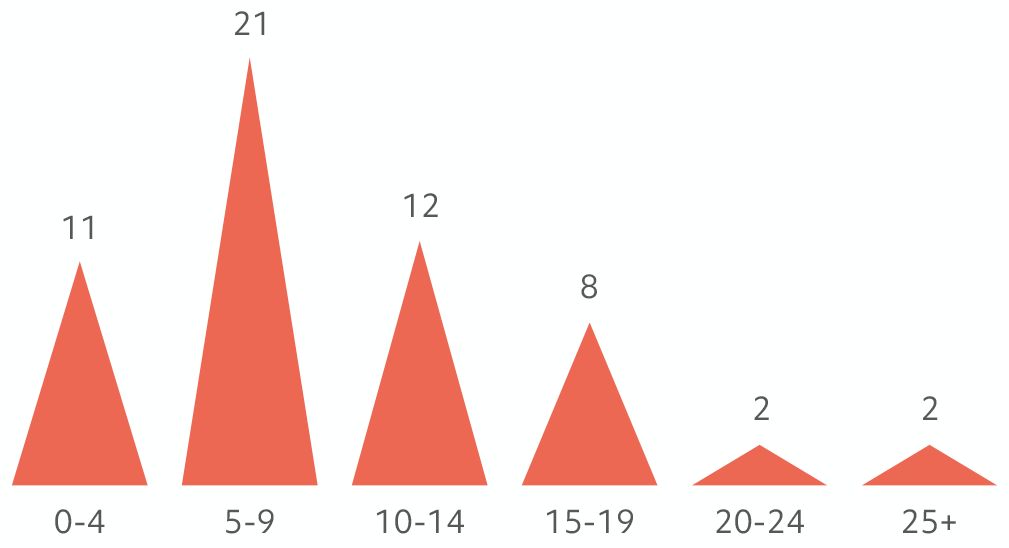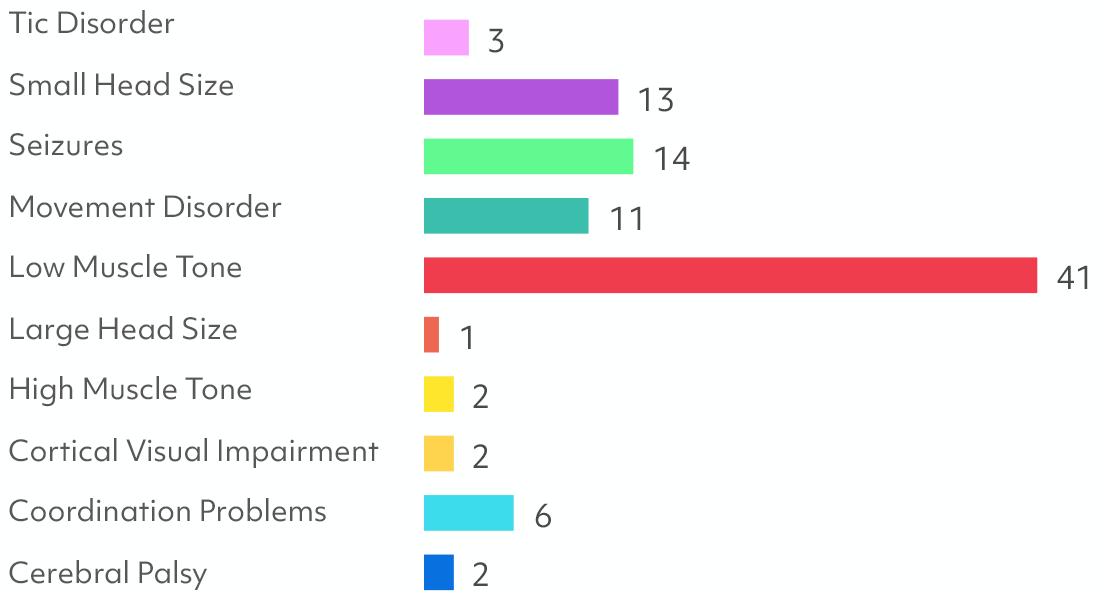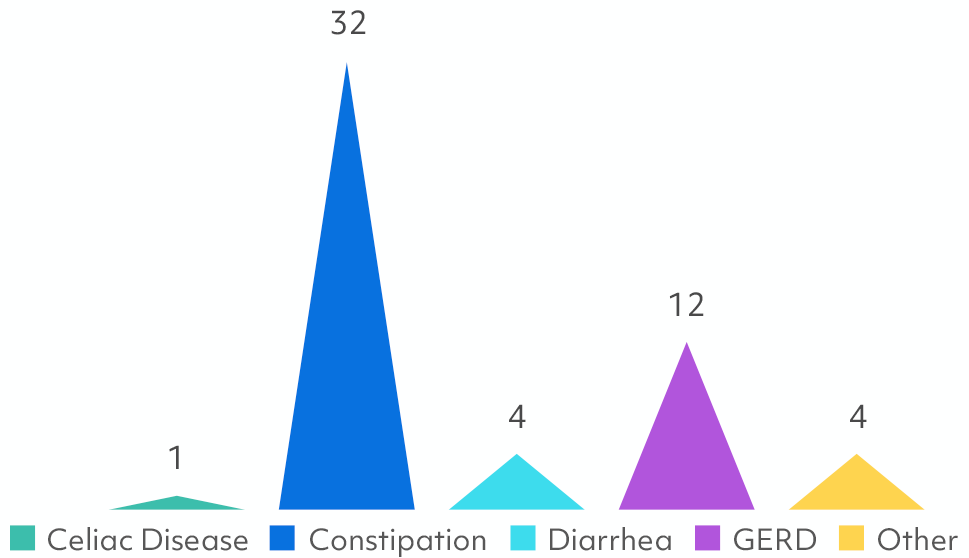Natural History Study
Our trusted research partner, Simons Searchlight, is an online international research program funded by the Simons Foundation Autism Research Initiative (SFARI). A long-standing platform for 14+ years, their primary focus is collecting natural history registry data from families with specific genetic changes associated with neurodevelopmental disorders, including autism, seizures, developmental delays, ADHD, and more. Currently, Simons Searchlight collects family, medical, developmental, and behavioral information through online surveys and phone interviews with families and individuals.
What are the goals of Simons Searchlight?
Our mission is to shed light on these conditions by collecting high quality natural history data and building strong partnerships between researchers, industry and families.
Collect detailed medical and behavioral histories along with blood samples
Synthesize the information you provide and share results back to families
Freely share data and sample with qualified researchers
Connect researchers and participants from around the world
Promote better understanding of these genetic changes
We highly encourage our community to register with Simons Searchlight to participate in the Simons Searchlight long-term natural history study. By participating in the Simons Searchlight study, we can improve our community’s understanding of OCNDS.
How to participate?
STEP 1
Sign up online
STEP 2
Provide your genetic lab report
STEP 3
Share your important medical history
STEP 4
Fill out surveys
STEP 5
Provide a blood sample if you are interested
STEP 6
Update us every year
Have you ever wondered:
- "What happens in adulthood for those living with OCNDS?"
- “How many individuals with OCNDS have autism or autism behavior traits?”
- “What is the average age that someone with OCNDS speaks?"
- "How many individuals with OCNDS have epilepsy?"
- "What do they do to manage their epilepsy?"
These are great questions which can't be answered unless individuals and their families participate in the OCNDS natural history study. Knowledge is power! On Sunday, March 14, 2021, we had a Question & Answer session with CSNK2A1 Foundation and Simons Searchlight about our natural history study. You can learn more about the types of questions asked on the Simons Searchlight website.
What do we know about OCNDS from Simon’s Searchlight?
OCNDS core features are conserved across variants, with loop-region mutations driving greater symptom burden
Access Article HereAbstract
Introduction: Okur-Chung Neurodevelopmental Syndrome (OCNDS) is an ultra-rare genetic disorder caused by de novo mutations in the CSNK2A1 gene, which encodes the catalytic subunit of protein kinase CK2α. OCNDS is characterized by global developmental delay, intellectual disability, speech and language deficits, and other multi-system symptoms. Although prior reports have described considerable phenotypic variability, the relationship between specific CK2α variant locations and symptom presentation remains poorly defined.
Methods: We analyzed natural history data from 48 individuals with pathogenic or likely pathogenic CSNK2A1 missense variants enrolled in Simons Searchlight. Variants were categorized by their location in conserved CK2α protein domains, specifically distinguishing between loop (e.g., glycine-rich loop, p+1 loop) and non-loop regions. We evaluated symptom burden across organ systems, age at diagnosis, and adaptive functioning using caregiver-reported surveys.
Results: All individuals reported speech/language delay, with additional common features including global developmental delay, neurological symptoms, and gastrointestinal issues. Variants in loop regions were associated with significantly younger age at diagnosis and a higher frequency of hypotonia. Mutations in the glycine-rich loop—known to bind both ATP and the regulatory CK2β subunit—were linked to significantly higher symptom burden and more non-seizure neurological symptoms. No significant differences were observed between variant locations for core features such as sleep issues, intellectual disability, or speech delay.
Discussion: Our findings suggest a core OCNDS symptom profile that is conserved across genotypes, with loop-region variants contributing to increased symptom burden. These results reinforce the relevance of conserved functional domains in driving phenotype severity and support the use of mutation location as a potential biomarker to stratify patients for therapeutic prioritization. Further studies incorporating functional assays and larger cohorts are needed to elucidate mechanisms of variant-specific pathogenesis and guide personalized intervention strategies.
Caregiver-reported dental manifestations in individuals with genetic neurodevelopmental disorders (2023)
Access Article HereAuthors: Neil R. Ming, Deanna Noble, Steven Chussid, Alban Ziegler, Wendy K. Chung
Abstract
Background: Children with neurodevelopmental disorders (NDDs) often have poor oral health and dental abnormalities. An increasing number of genes have been associated with neurodevelopmental conditions affecting the oral cavity, but the specific dental features associated with many genes remain unknown.
Aim: To report the types and frequencies of dental manifestations in children with neurodevelopmental conditions of known genetic cause. Design: A 30- question survey assesing ectodermal and dental features was administered through Simons Searchlight, with which formed a recontactable cohort of individuals with genetic NDDs often associated with autism spectrum disorder (ASD).
Results: Data were collected from a largely paediatric population with 620 affected individuals across 39 genetic conditions and 145 unaffected siblings without NDDs for comparison. Drooling, difficulty accessing dental care, late primary teeth eruption, abnormal primary and permanent teeth formation, misshapen nails, and hair loss were more frequent in individuals with NDDs. Additionally, we evidenced an association between three new pathogenic gene variant/oral manifestation pairs: CSNK2A1/unusual primary teeth, DYRK1A/late primary teeth eruption, and PPP2R5D/sialorrhea.
Conclusion: Our results demonstrate that genetic NDDs caused by mutations in CSNK2A1, DYRK1A, and PP2R5D are associated with unique dental manifestations, and knowledge of these features can be helpful to personalize dental care.
KEYWORDS: brain function, dental health survey(s), genetics, personalized medicine, tooth development
Simon’s delivers quarterly reports to the foundation with updated data. Here is an example of the summary data from August 2023:
Simons Searchlight Registry Update CSNK2A1 (OCNDS)
Data in these four graphs are from the medical history phone interviews collected in Simons Searchlight from 56 participants with CSNK2A1 (Okur-Chung Neurodevelopmental Syndrome).
Ages in Years

Graph shows the different ages represented by groups: ages 0-4 (11 individuals), ages 5-9 (21 individuals), ages 10-14 (12 individuals), ages 15-19 (8 individuals), ages 20-24 (2 individuals), and ages 25+ (2 individuals).
Developmental and Behavioral Conditions

Graph shows different developmental and behavioral conditions experienced by individuals with OCNDS: ADHD (10 individuals), anxiety (9 individuals), autism (14 individuals), intellectual disability or developmental delay (51 individuals), and language delay or impairment (56 individuals).
Neurological Conditions

Graph shows different neurological conditions experienced by individuals with OCNDS: tic disorder (3 individuals), small head size (13 individuals), seizures (14 individuals), movement disorder (11 individuals), low muscle tone (41 individuals), large head size (1 individual), high muscle tone (2 individuals), cortical visual impairment (2 individuals), coordination problems (6 individuals), and cerebral palsy (2 individuals).
Gastrointestinal Conditions

Graph shows different gastrointestinal conditions experienced by individuals with OCNDS: celiac disease (1 individual), constipation (32 individuals), diarrhea (4 individuals), GERD (12 individuals), and other (4 individuals).
You can also watch this video where Dr. Wendy Chung explains why it is important for OCNDS families to participate.
Additional Informational Videos
The Impact of Participation and Data in Genetic Research
Researchers Using Simons Searchlight Data
If you have any questions and would like to talk with a member of our community who is participating in the Simon’s Searchlight, please contact us and we will put you in contact with a community member to talk with about their experience. You can view testimonials from OCNDS families.
